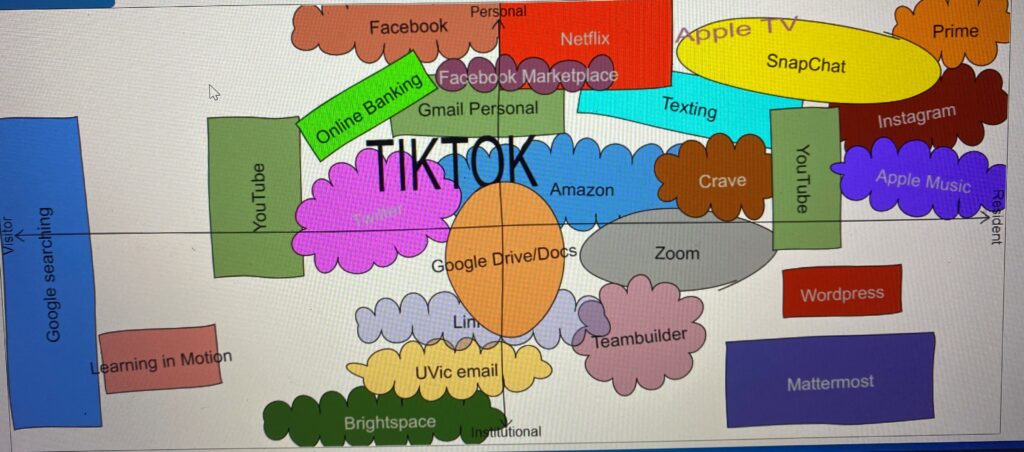
Jessica Clark and Patricia Aufderheide(2013) suggest that until the internet came along, TV and newspapers were essential for information to be shared with the public. When the internet was created, social media became a way of life and even though it may look different, its purpose is to still educate and inform. Technological innovations have changed the way we learn about everything and communicate with everyone. Now, we not only use social media to connect with those we may be physically separated from, but we also use it to discover and connect with new people, thus creating more connections and our own online communities. In the last decade, social media has given individual users the ability to move from “being an anonymous part of a mass to being the center of the media picture”(Clark & Aufderheide, 2013). Numerous diverse and inclusive communities have formed online because of social media. When a person becomes part of a community, they feel a sense of belonging. The wide range of social media platforms available allow individuals to connect in different ways, for different purposes, and with different people. For example, social media can now be used to engage in advocacy communications. This approach is used to influence specific audiences and use specific messages in order to deliver changes in policy or practice(Coulby, 2010). Advocacy is all about influencing and persuading individuals and institutions to change and this will not happen unless you are able to communicate your ideas and proposals effectively. A perfect example of how social media can be used as a powerful tool to enable advocacy communications by spreading ideas ,facts, is the message from education activist, Markiel Simpson. Simpson, a member of the BC Community Alliance, stated that social media has helped him expand his PLN, and without it, he would not have made important connections with people who have helped him spread his message. Simpson uses a number of different social media platforms and online communities to fight the structural inequities created by anti-black racism in British Columbia. His tweets are largely focused on improving education and supporting other activists in the community. He shares lots of actionable stuff and he encourages everyone to join the movement to have Canadian Black history as part of the curriculum in BC. The use of social media has been valuable to his advocacy communications because it offers an opportunity to reach large numbers of people without spending large sums of money. Social media is a powerful force and can influence public opinion. Policy makers and groups involved in political processes pay close attention to the press. By using social media, Simpson was able to gain the attention of Rob Fleming, Minister of Education. Although media coverage can have an considerable benefits, it is important to remember that the use of the media also carries certain risks. If the media reports unfavorably on your issue or your organization, or if their reporting is inaccurate, the impact may be negative rather than positive.
I found the interview with Simpson and Miller helpful in order for me to gain a better understanding of how to use a variety of social media tools in order to promote and advocate for social change. These tools can enhance supporters’ advocacy engagement and can help sustain efforts in the midst of inevitable challenges. What is most impressive about Simpson is that he thinks a PLN should be an honest reflection of who you are as an individual and most importantly, the public should be able to trust you. This has given me incentive to expand my PLN and get involved in my community because a group of people no matter what their experiences, are more powerful than one voice. It is obvious to me that my PLN needs to expand in order for me to meet, learn, exchange information, and discuss solutions. Although I believe I am welcoming to those of differing backgrounds than me, I could do more to connect with my community. By challenging myself to step out of my comfort zone, I will have the opportunity to be part of something much larger. By sharing my personal beliefs, I could possibly change the beliefs of others, or I could engage in conversations within my learning network that could make me see things from a different perspective.
My personal learning network does amplify the views of others. I am always using social media to spread the word about initiatives and causes. For example, my basketball team uses our team Instagram and Twitter for “ Bell Let’s Talk Day”. We get behind this initiative to encourage Canadians and people around the world joined in to help create positive change for people living with mental health issues. The athletic department expects each varsity team to do their part in promoting these initiatives. In some cases, USport(governing body of university athletics)expects each University to fundraise for a specific cause. An example of this is “Shoot For The Cure”. In this specific case, each varsity basketball team in the country was required to participate. This affected each member of our team as we were asked to participate in little one minute video clips to spread awareness. The department then put these videos all together to make a stronger, more impactful message. It was also a way for the department to share information on how much money they raised for the cause. We have participated in this fundraiser each year that I have been on the team and I have seen a huge difference in how social media is being used to spread awareness. The hashtags and tweets etc. are important but I think the message spread more when influencers got on board. I think this goes without saying, but if you want the world to see things, you need people who are influential and have lots of followers. There can be negatives associated with using social media and influencers and commentators to help advertise. For example, if you are selling or promoting a product and someone who has a ton of followers comments something negatively, it can hurt you financially. Society tends to trust influential people and that’s why marketers use famous people to endorse their products. However, we don’t always recognize that these people are getting paid a lot of money to say what the company wants them to say.
References
Clark, J., & Aufderheide, P. (2013). A New Vision for Public Media – Open, Dynamic, and Participatory. In J. Pooley, L. Taub-Pervizpour, & S. C. Jansen (Authors), Media and social justice (pp. 55-67). New York: Palgrave.
Coulby, H. (2010). Advocacy Communications-A Handbook for ANew Members. WaterAid, Communications Toolkit, Chapter 4 -Getting the Message Across. http://www.freshwateraction.net/ANEW_advocacy_communications_handbook_draft.pdf
Simpson, Markiel. “EDCI 338 – 2021 – 02 – 22 MARKIEL SIMPSON.” 22 Feb. 2021. doi: https://youtu.be/yCSpm1Lx8-A

